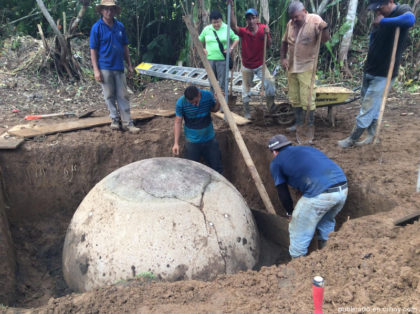
Museo Nacional
As part of a process of diagnosis and conservation, the National Museum “freed” the stone spheres of Diquis, the country’s most important archaeological site and one of the World Heritage sites.
From July 17th to 25th, the spheres were released by archaeological excavation and micro-excavation. The National Museum reported that the objective is to document its physical state, both on the exposed upper surface and on the ground.
The intervention is part of the conservation of the Diquis stone spheres, located in the canton of Osa in the South Pacific of the country. The process has the support of the National Institute of Anthropology and History of Mexico (INAH).
Conservation specialist Isabel Medina-González accompanied the professionals of the National Museum for a third year. The expert advises the Department of Protection of the Cultural Heritage in the conservation of the spheres.
Restauration specialist Ana Eduarte explained that they focused on the five areas in context (original site) in Finca 6 and the one in Grijalba-2.
Punctual release interventions had previously been made. Now the process will generate two records: a detailed photographic record of each of the spheres from all angles, and another one of the alterations.
After the diagnosis, preventive measures will be taken and the most optimal strategy of reburial, to favor the preservation of the monoliths.
The diquis spheres are internationally known monuments. In June 2014 the United Nations Educational, Scientific and Cultural Organization (Unesco) declared Finca 6, Batambal, El Silencio and Grijalba-2 as World Heritage.
The sites contain the history of the pre-Columbian societies of the Delta of the Diquis, which reached their pinnacle between the years 300 and 1500 AD.